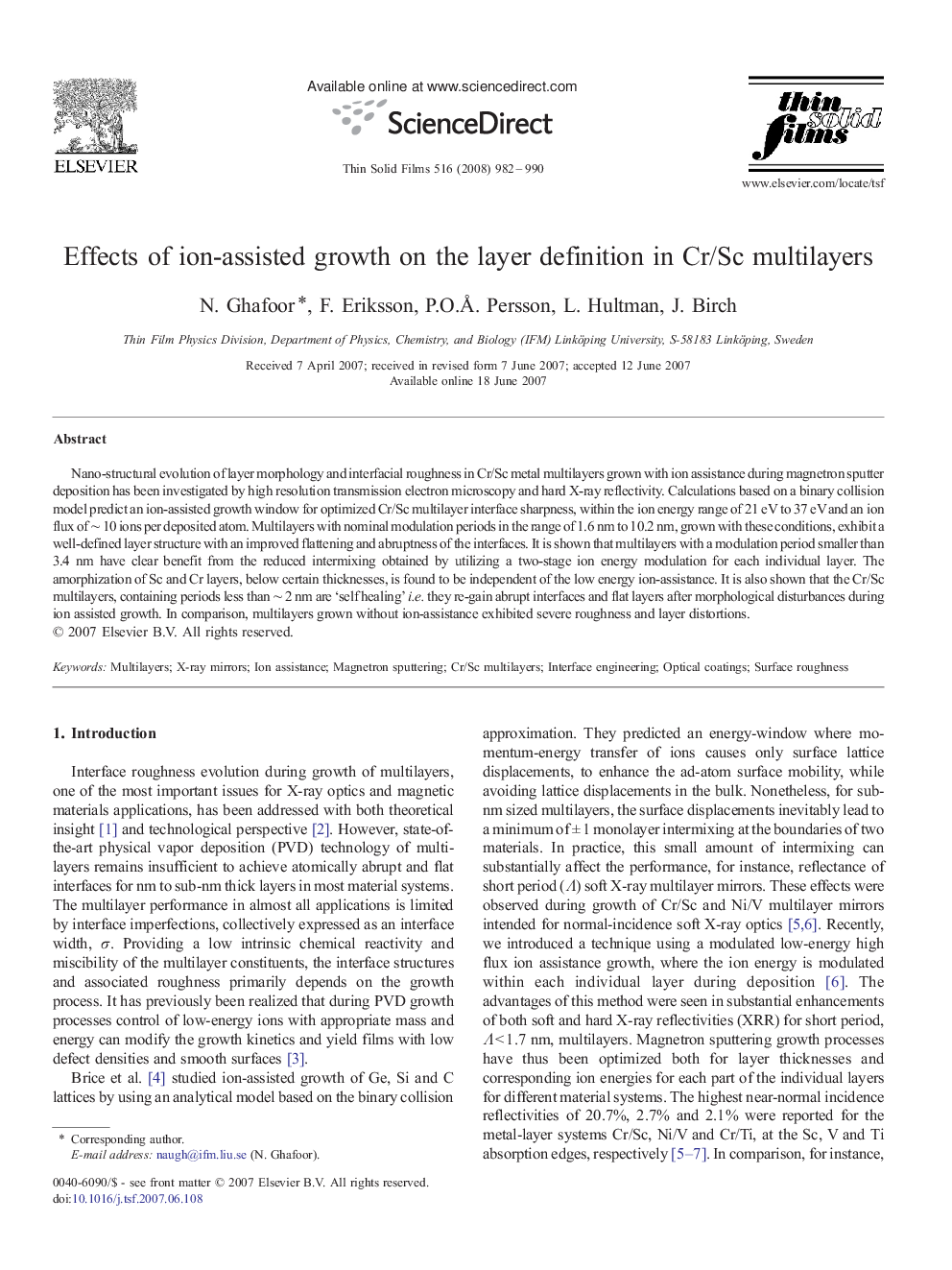| Article ID | Journal | Published Year | Pages | File Type |
|---|---|---|---|---|
| 1675754 | Thin Solid Films | 2008 | 9 Pages |
Nano-structural evolution of layer morphology and interfacial roughness in Cr/Sc metal multilayers grown with ion assistance during magnetron sputter deposition has been investigated by high resolution transmission electron microscopy and hard X-ray reflectivity. Calculations based on a binary collision model predict an ion-assisted growth window for optimized Cr/Sc multilayer interface sharpness, within the ion energy range of 21 eV to 37 eV and an ion flux of ∼ 10 ions per deposited atom. Multilayers with nominal modulation periods in the range of 1.6 nm to 10.2 nm, grown with these conditions, exhibit a well-defined layer structure with an improved flattening and abruptness of the interfaces. It is shown that multilayers with a modulation period smaller than 3.4 nm have clear benefit from the reduced intermixing obtained by utilizing a two-stage ion energy modulation for each individual layer. The amorphization of Sc and Cr layers, below certain thicknesses, is found to be independent of the low energy ion-assistance. It is also shown that the Cr/Sc multilayers, containing periods less than ∼ 2 nm are ‘self healing’ i.e. they re-gain abrupt interfaces and flat layers after morphological disturbances during ion assisted growth. In comparison, multilayers grown without ion-assistance exhibited severe roughness and layer distortions.
